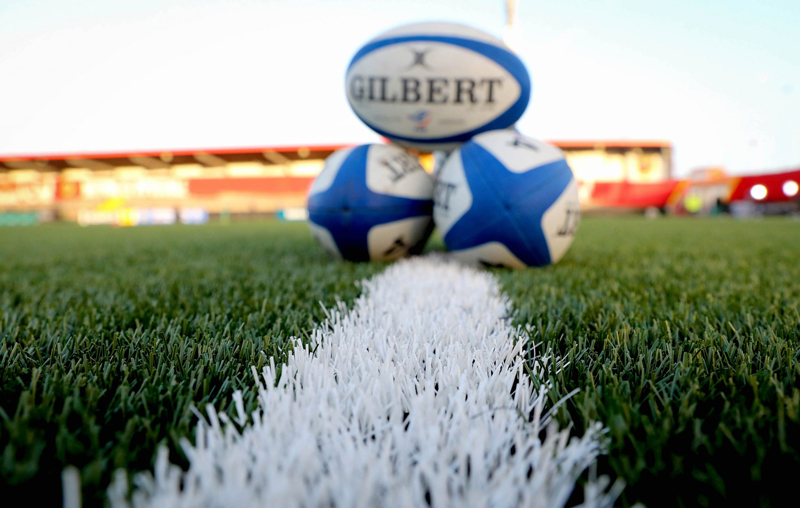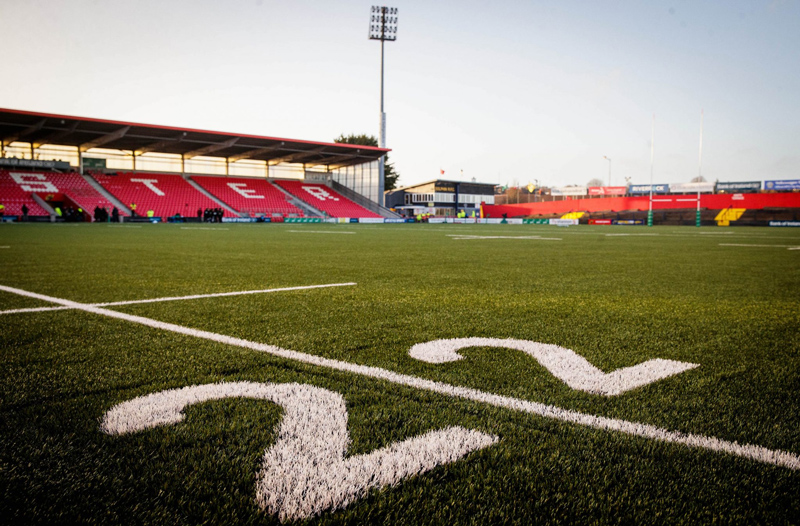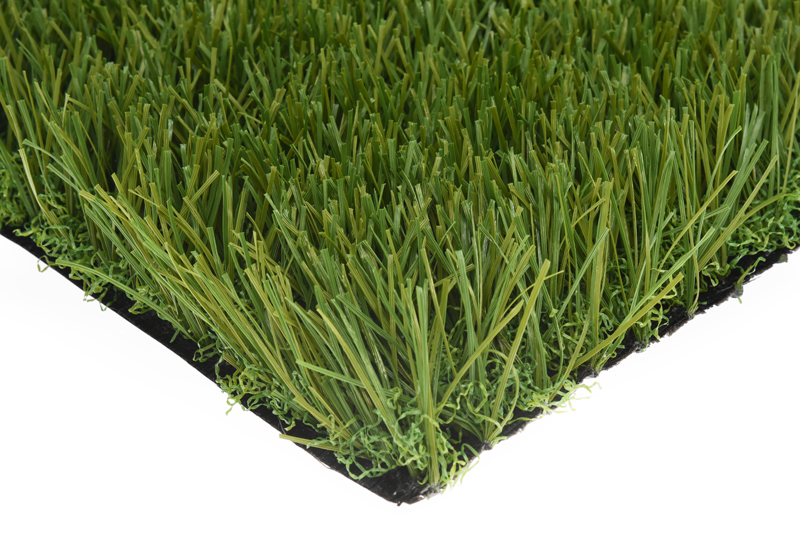Rugby Accepts Lower Pile Height for Synthetic Turf
- 12/30/2022
As rugby continues to grow in popularity across the globe, there has been a notable shift toward synthetic grass as a reliable and high-performance option for clubs, schools, and multi-sport facilities. World Rugby has been at the forefront of these developments, ensuring that synthetic rugby pitches meet the highest safety standards while offering increased opportunities for play.
Recent changes to the pile height requirements for synthetic turf have made it easier for more fields to become Regulation 22 compliant, benefiting the sport at all levels.
In this article:
The benefits of artificial grass for rugby
Artificial rugby turf brings numerous advantages to rugby, enhancing both player safety and field management while offering practical and financial benefits.
Enhanced player safety
Rugby turf systems, like those from CCGrass, feature long-length fibres, performance infill, and specialized shock pads, ensuring excellent impact absorption and energy restitution. Meeting World Rugby Regulation 22, these systems reduce injury risk in high-contact, physically demanding play.
Year-round, all-weather performance
Artificial grass offers reliable playability in all conditions, withstanding heavy foot traffic, rain, and extreme temperatures. Unlike natural grass, it doesn’t require recovery periods or become waterlogged or muddy, allowing uninterrupted use for training, matches, and events throughout the year.
Lower maintenance costs
Maintaining synthetic turf is far less labor-intensive than natural grass. Regular brushing and occasional infill top-ups keep the surface in good condition, eliminating the need for mowing, watering, or fertilizing, significantly lowering ongoing costs.
Increased revenue potential
The durability and versatility of artificial rugby turf open up additional revenue streams for clubs and facilities. Fields can be rented out for multiple sports, training camps, or community events. With fewer cancellations due to weather or field condition issues, these pitches can generate consistent income year-round.
World Rugby’s Regulation 22: Why the Change in Pile Height?
A simple change to the pile height of the synthetic turf, has been adopted after considerable research and discussion. It means more artificial grass fields can host rugby. Previously, the pile height was 60mm or above. This comprises of between 15 and 18mm of free pile (the green fibre tips) and an infill depth of 42-45mm, normally sand at the base then recycled rubber granules. The synthetic turf needs to have a shock absorption layer or pad beneath, to help the pitch meet the strict test requirements.
This system has seen great success, with former European and Premiership Champions Saracens, a host of top clubs in the UK and France, junior clubs, schools and university fields, around the world, all playing on synthetic turf pitches. So why change the pile height?
World Rugby explained, “The more fields that are available to rugby teams/players that are Regulation 22 compliant, the more opportunities there are for World Rugby Member Unions to grow the game and fulfill a priority of World Rugby. The existing 60mm pile height has been perceived as a barrier to some multi-sport facilities adding rugby certification to their field(s) which means that these fields cannot be used for contact rugby training or matches. ”
Research and safety of 50mm pile height for rugby turf
World Rugby have worked to identify if there are potential additional risks to players if they were to play on reduced pile height fields. The projects by Cardiff Metropolitan University and by Sports Labs indicate that the risks to players on a 50mm surface appear to be no greater than those on a 60mm surface.
The new change does have some riders. If the surface is reduced below 60mm, then a minimum yarn weight has to be met, there must be at least 10mm of performance infill and tests become tighter on infill “splash.”
The views of World Rugby and World Rugby Preferred Turf Producers, such as CCGrass, is that where rugby is the main sport, a 60mm pile height surface with a high quality shock pad beneath, is the recommended option.
World Rugby commented, “Consideration of carpets with pile heights between 50mm and 60mm should be restricted to multi-sport, community-based fields that wish to offer rugby as an additional or optional sport.”
The reduction in pile height will allow more dual-purpose fields, also meeting football’s highest standards – FIFA Quality Pro. A further bonus is that recreational hockey is possible, to the FIH Multi-Sport level.
CCGrass Max EX2 50 – Meeting new standards
The Max EX2 50 is our first turf system designed to comply with the latest FIFA, FIH, and World Rugby standards. It features Omega Max straight fibres and resilient curled yarns, along with a high-performance shock pad and SBR infill, achieving an impressive HIC value of 2.4, exceeding World Rugby’s requirement of >1.3 for optimal player safety.
Highlights
- Omega monofilament combined with curly yarn
- Outstanding standability enhanced by Max and curly yarn
- Unique Matt fibre colour
- Certified by FIFA, FIH, and World Rugby
If you’re interested in our 60mm range of rugby systems, please visit our Rugby Turf page for more information.






